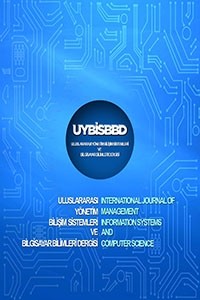THE LEVEL ASSESSMENT OF HEALTH ACADEMY OF UNIVERSITY OF KIRKLARELI STUDENTS’ ABILITY OF USING CLOUD COMPUTING IN BASIC INFORMATION TECHNOLOGY COURSES
Cloud computing or by its functional meaning on-line information distribution is a name which is given to the services which provide common sharing of information among IT devices. With this purpose, in order to reduce the hardware costs, many institutions and organizations have started to use Cloud technology. At the computer laboratory at Health Academy of University of Kırklareli, it has been provided that in the Basic Information Technology course, Cloud computing practice is used by total 512 students who receive day time and evening education on Tocology, Nursing, Nutrition and Dietetics, Health Management and Pediatric Development. With this questionnaire conducted on students, the benefits and outcomes of the Cloud computing system has been attempted to be determined.
Anahtar Kelimeler:
Cloud, vocational training in educational technology, unique training methods and techniques
THE LEVEL ASSESSMENT OF HEALTH ACADEMY OF UNIVERSITY OF KIRKLARELI STUDENTS’ ABILITY OF USING CLOUD COMPUTING IN BASIC INFORMATION TECHNOLOGY COURSES
Cloud computing or by its functional meaning on-line information distribution is a name which is given to the services which provide common sharing of information among IT devices. With this purpose, in order to reduce the hardware costs, many institutions and organizations have started to use Cloud technology. At the computer laboratory at Health Academy of University of Kırklareli, it has been provided that in the Basic Information Technology course, Cloud computing practice is used by total 512 students who receive day time and evening education on Tocology, Nursing, Nutrition and Dietetics, Health Management and Pediatric Development. With this questionnaire conducted on students, the benefits and outcomes of the Cloud computing system has been attempted to be determined.
Keywords:
Cloud, vocational training in educational technology, unique training methods and techniques,
___
- Assista (2013), viewed 2016,
- Bora, U. M., Majidul A.(2013)."Bulutbilişim kullanarak E-öğrenme."International Journal of Modern BilimveMühendislik 1.2 : 9-12.
- Çetin, H., Akgün, A. (2015)"Yeşil Bilişim Teknolojileri Bağlamında Sanallaştırılmış ve Klasik Sistemlerin Karşılaştırılması." Uluslararası Alanya İşletme Fakültesi Dergisi 7.2.
- Faucheux S. and Nicolai, I. (2011), "IT for Green and Green IT: A Proposed Typology of Eco-Innovation", Ecological Economics, 70, s.2020–2027.
- Harmon, R. R. and Auseklis, N. (2009), "Sustainable IT Services: Assessing the Impact of Green Computing Practices", PICMET 2009 Proceedings, 2-6 August 2009, Portland, Oregon USA, s.1707-1717.
- Jolliffe, A., Ritter, J. and Stevens, D., (2001). The online learning handbook: Developing and using Web based learning. Kogan Page, London
- Kiruthiga, P., Vinoth, K. T. (2014). "Green Computing – An Eco Friendly Approach for Energy Efficiency and Minimizing E-Waste", International Journal of Advanced Research in Computer and Communication Engineering, Vol.3, Issue 4, s.6318-6321.
- Oladimeji, I.W., and Folashade. I. M. (2016) "International Journal of Science and Applied Information Technology." International Journal 5.1.
- Simulation (2016), viewed 2016,
- Süer C., 2013, ‘Sanallaştırma Nedir? Şirketlere Hangi Avantajları Sunar?’ Viewed 2016
- Taher, O. F., and Bay Ö.F. (2013)."Bulut Bilişim Platform ve Yazılım Hizmetini Dağıtmak için Web-tabanlı Sanal Laboratuvar Tasarımı."Politeknik Dergisi 16.2.
- Virtualization (2014), viewed 2016,
- Zaharescu, E., and Georgeta-Atena Z.(2012). "Enhanced virtual e-learning environments using cloud computing architectures." Int. J. Comput. Sci. Res. Appl 2.1: 31-41.
- Başlangıç: 2017
- Yayıncı: Adem KORKMAZ
